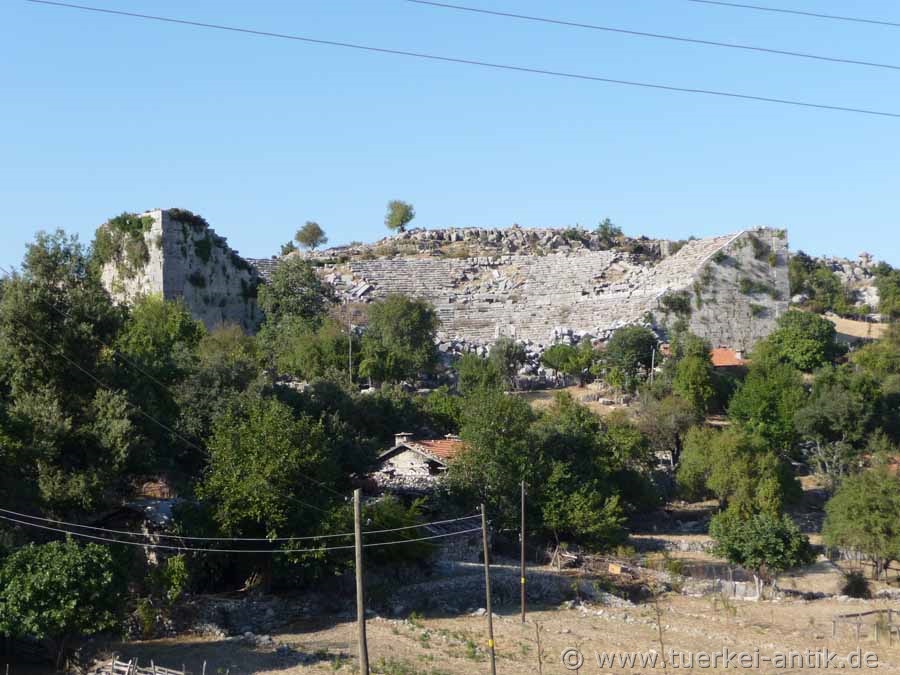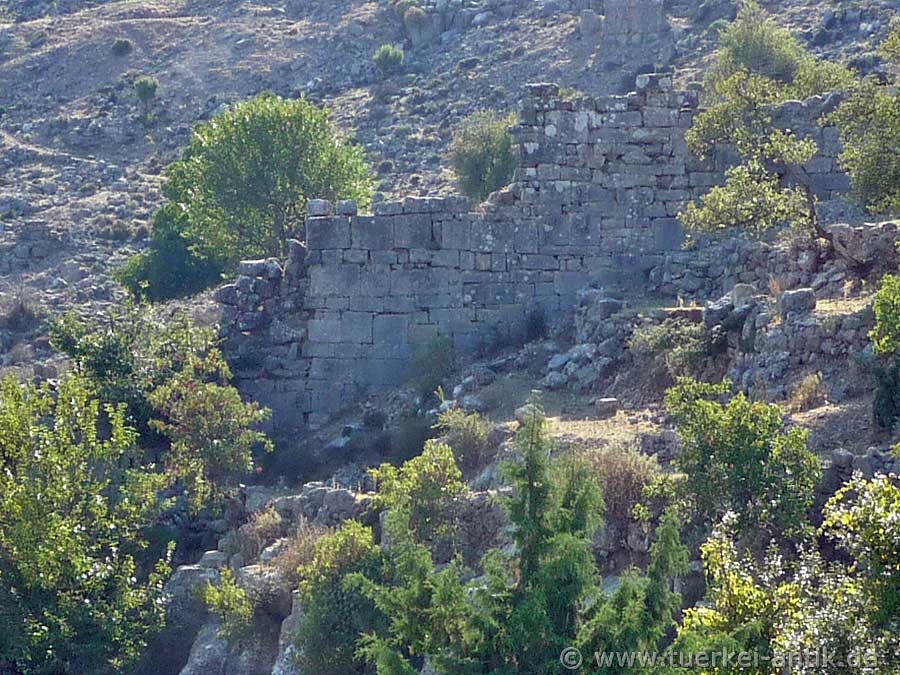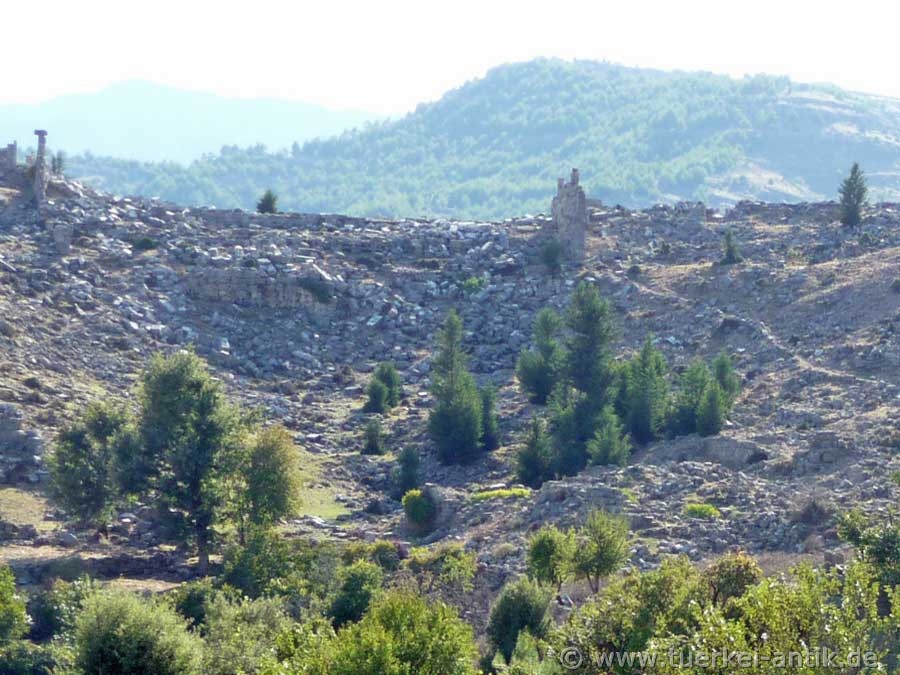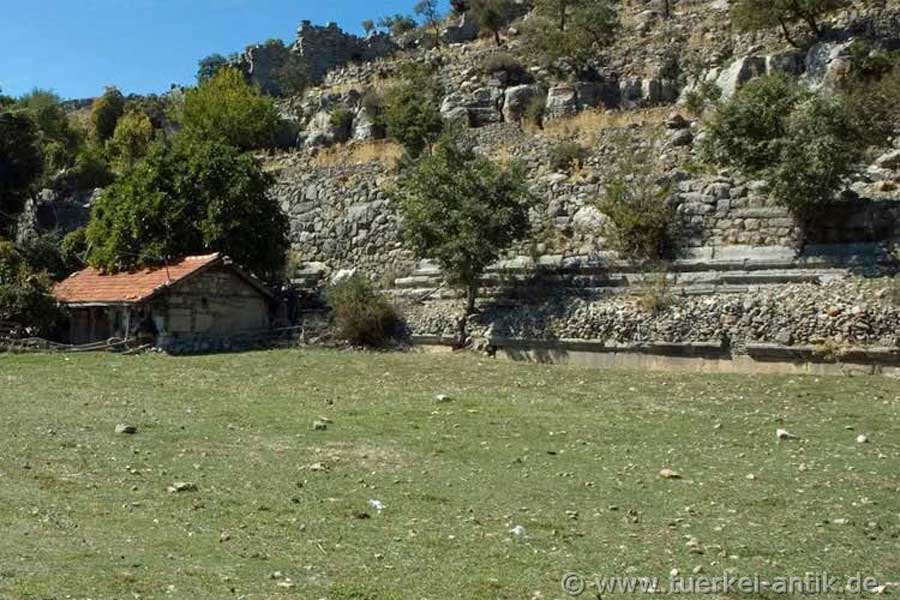 |
| Selge | |||
 |
|
||
| The Roman Theatre | |||
|
According to tradition, Selge was founded after the war around Troy by the seer Kalchas and settled by Greeks from Sparta. The place has been traceable on coins since the 5th century BC. The economic basis was the cultivation of wine and olives on the surrounding fertile plateau. Politically there were good relations with Aspendo, otherwise the city was warlike against its neighbours. When Alexander the Great passed through Asia Minor, the city allied itself with him to besiege the nearby city of Termessos, but without success. |
|||
|
|
|||
| Remains of the city wall | |||
|
25 B.C. Selge loses its independence and is integrated into the Roman province of Galatia. According to Strabo, the city had about 20,000 inhabitants at that time. Selge flourished at the time of the Roman Empire. 339 An unsuccessful siege by the Goths takes place. In Byzantine times Selge was a bishop's residence. The city was later abandoned in Seljuk times. | |||
|
|
|||
| Remains of a basilica | |||
|
At Selge's heyday in the 3rd and 4th centuries AD, the city had about 20,000 inhabitants. The city had achieved considerable prosperity by obtaining the resin of the Styrax trees (Styrax officinalis) for incense. |
|||
|
|
|||
| The theatre | |||
|
The theatre, undoubtedly the most impressive building of the city, offered space for 10,000 spectators. An earthquake in the 1940s destroyed the largely undamaged stage house and caused considerable damage to the upper rows of seats. |
|||
|
|
|||
| The former stadium | |||
|
The inhabitants of the village took advantage of the facilities of the ancient city. On the lower agora the plough makes its tracks and in the old stadium cows graze the grass. |
|||
|
|
|||
|
|
|||
|
|
|||
|
The way to Selge today is first and foremost a journey through a landscape of wild beauty. However, the inhabitants of that time probably had a different perspective. The mountains of the Taurus Mountains reach heights of up to 2500 metres. Pine, cedar and cypress forests characterise the landscape and give it a very special charm for us. |
|||
|
|
|||
|
|
|||
| The Eurymedon Bridge | |||
|
At a distance of about 37 km from the Mediterranean coast you pass the Eurymedon bridge (Turkish: Oluk Köprü) from the 2nd century A.D. The bridge over the Eurymedon (today Köprüçay) is part of a road connection that winds up from the coast of Pamphylia into the Pisidian hinterland. Passing the bridge, you reach Selge after 14 km of serpentines. |
|||
|
|
|||
|
The width of only 2.5 m is today the tourist fate of Selges, or the village Altınkaya built on the former city area. There are no tourist buses across the bridge. Also some unsafe drivers don't dare to cross the bridge with their rental car. Thus, the residents of Altınkayas are dependent on the income of the few visitors who found their way into the city in the clouds by car or minibus. |
|||
| Photos: @chim | |||
| Translation aid: www.DeepL.com/Translator | |||
| Source: Wikipedia and others | |||
|
|
|||




